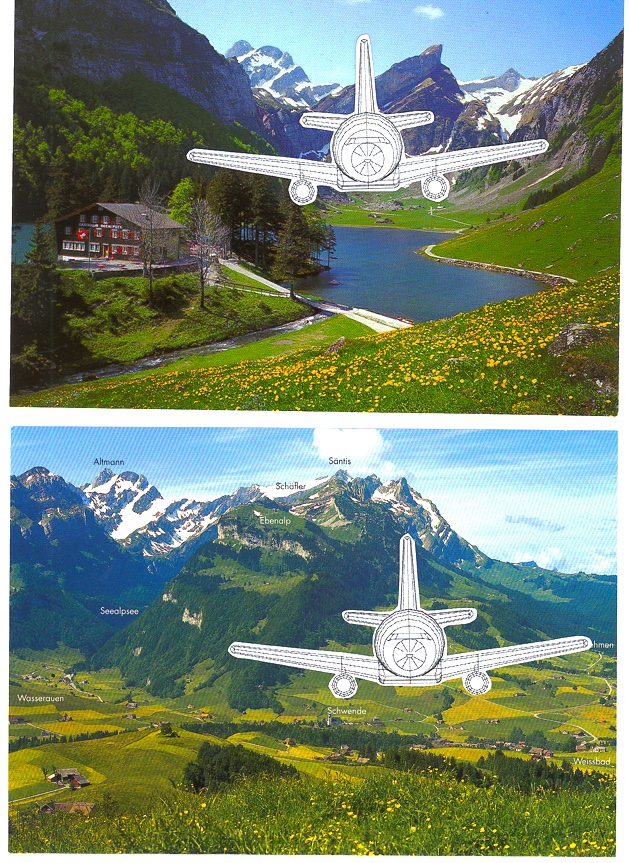Intro
Let's See What Happens and Who Will Be There,
Interview with Aleksandra Mir
Exhibition brochure, Kunsthalle St. Gallen, 2003.
Excerpt interview:
"Gianni Jetzer: To build a balloon in the shape of a steel airplane was a real challenge. What is the image that you have in your mind, when you imagined your plane floating out there?
Aleksandra Mir: I wanted a floating, tethered balloon, that would sit completely still in the sky, hovering fairly low overhead, as in a permanent state of landing. A sculpture in the air, that hardly moves. This is not a technical challenge; it is a complete absurdity and a paradox. A balloon has no means of velocity but simply drifts with the wiind, this is what makes it the blissful form of aviation that it is. The best balloon shape to balance and to sustain the elements is therefore a sphere; the worst imaginable is a cross—the shape of an airplane. The cross- shape in turn was designed to propel itself, i.e. 500 ton steel, ahead by aerodynamic force. You fill that shape with helium, and you are basically defeating all physical laws.
You have chosen different landscapes to launch Plane Landing in all kind of different settings, from the English Parkland, the Manhattan skyline, the desert of Shariah to the mountains of Säntis. What is the importance of the landscape for the project and how get local people involved?
The plane offsets the landscape that it is placed within, which is how I want to discuss 'location' and invert site specificity by. Local hostship is developed on every site so that the meaning of the work becomes associated with local desires from the very start. When you and I met around this for example, you mentioned what's on the Swiss mind at the moment, the collapse of the national airline Swissair and its significance to the national identity. In Manchester, it adds to the history of industrialism; In NY, we had a meeting immediately after September 11, to assure the necessity to produce the work in Manhattan and maintain its openness.
(...)
In your installation Aviation Archive you bring together over 100 books, composing a panorama of heavenly iconography. What is the link between the Aviation Archive and the Plane Landing piece?
In between my Bristol meetings, there is very little for me to do, so to sustain my interest in aviation, I started to collect plane reference material and memorabilia which is collected in the Aviation Archive and that I can exhibit independently or in combination with the plane. The Aviation Library is the gathering of hundreds of book with skies and airplanes on them. The contents of the books range from technical manuals to spiritual guidance, cheesy novels and success stories. A sky is such a useful image.
(...)
Do you see yourself as the pilot of Plane Landing or as the "master of ceremony"?
I usually see myself as a hostess in my work. It all about inviting people to participate and make them feel part of it. It can get sinister, but mostly, it is very sweet."
